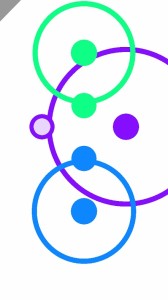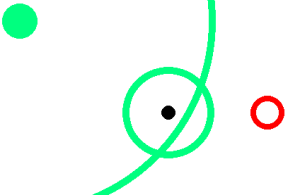So a few days ago I started development on a new game called Iris. It takes some ideas from Circadia (see last post for a video) and expands the physics. Things we’re learning:
- refactoring code is awesome (I’ve refactored the same bits several times now and with each pass it becomes easier to implement new functionality)
- closures are amazing for making programmable objects (e.g. say you have a class that you want to move around, but you wan the movement to be generalizable; pass in a closure that keeps track of the movement and updates the object every time it’s called, and just bind that to the update() in the object. Done! Or even more generally, make a function that makes these closures for some parametrization and being DRY)
- level design via text is a pain (seriously, we’d be so much faster if we just made a level designer… time to get on that)
- people can enjoy playing something they don’t even understand! The first couple builds didn’t have any tutorial, and watching people play we saw them delighted by the audio/visual and aesthetic aspects of the game, without even being sure of what they were trying to do.
- it’s pretty easy to make VERY hard puzzles with fairly few mechanics–the bigger difficulty is in crafting a journey
Screenshots are below, and per usual if you want to get access to pre-release builds join us on Testflight, we love to share!

